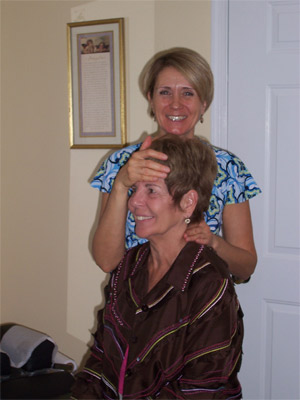Bulletin Board
Knowing is Half of Healing!
We are thrilled to provide you with timely and pertinent information you can use every day. Feast and enjoy! Let us know what you think.
What is a subluxation?
The word "subluxation" comes from the Latin words meaning "to dislocate" (luxate) and "somewhat or slightly" (sub). A subluxation means a slight dislocation (misalignment) or biomechanical malfunctioning of the vertebrae (bones of the spine). These disturbances may irritate nerve roots and blood vessels which branch off from the spinal cord between each of the vertebrae. This irritation may cause pain and dysfunction in muscle, lymphatic and organ tissue, as well as imbalance in the normal body processes.
TOP 10 DANGEROUS THOUGHTS ABOUT YOUR HEALTH
1. It will go away if I ignore it.
2. I'll just take some Ibuprofen.
3. I'm fine. My back doesn't hurt at all.
4. It's too late. I'm too old to get better.
5. I can "crack" my own back.
6. My doctor says there's nothing else I can do.
7. I went to a chiropractor once and he fixed me.
8. I'm healthy. I'm not taking any medications at all.
9. I'm too busy. I'll do it next week.
10. My wife/husband doesn't believe in it.
Make yourself a priority and get the care you need and deserve. Excuses only delay your progress.
Who Should See A Chiropractor?
Everyone who has a spine! Chiropractic care needs to start immediately after birth and continue throughout one's lifetime. We all know the importance of regular dental exams and maintaining the health of our teeth. If we were able to look at the condition of our spines every day we would never doubt the need to have chiropractic care! We would be able to see the subluxations and see the degenerative changes that occur when spinal alignment is not maintained. Unfortunately we can't look at our spines every day and see if there are subluxations that need to be corrected.
It only takes pressure the weight of a dime on a spinal nerve root to cause 60% loss of spinal nerve function. That would be like trying to talk on the phone and only being able to hear 40% of what is being said. It just makes sense to take care of the most important system from birth.
When Should You See A Chiropractor?
For some it is difficult to tell there are vertebral subluxations until there is pain. Unfortunately once someone feels pain it usually means that the subluxation has been there a while.
Everyday we encounter micro-traumas to the spine. Any stress can cause vertebral subluxations: mental, emotional, physical and environmental stress. Initially a person may feel nothing at all or may feel tension in their muscles which can at times be relieved with rest or other healing modalities such as: massage, acupuncture, reflexology, Reiki, meditation, homeopathy or herbs. All these natural healing modalities have great benefit and in my opinion work well along with regular chiropractic care. However, none of these techniques or their practitioners is trained to detect and aid the body in actually correcting vertebral subluxations, only a trained chiropractor can.
How Often Should You Get Adjustments?
When a patient has been under regular chiropractic care long enough to have gone through the stabilization phase of care (initially getting the spine muscles to begin to hold the adjustments usually 2 to 3 visits a week for 6 to 8 weeks) and the corrective phase of care (weekly visits and then biweekly visits in which the length of time needed depends on many factors like: the degree of subluxation degeneration, lifestyle, work and home stress, use of drugs of any kind, nutrition, type of exercise, etc.)
Most people do very well with a once a month wellness adjustment. The ultimate is once a week however that doesn't always fit into everyone's schedule and my motto for wellness care has always been “get in at least once a month if you can and if you can get in more often then do that. If it's too stressful to get in more often then it's defeating the purpose.”
I Have Monthly Adjustments – Should I Come In More Often?
During times of extra stress or if there is an injury then get in more often during that time.
Some patients can tell by their eyesight not being as "clear". Some report not being able to be as sharp with their thinking. Some notice improved emotional stability and come in when they start to feel "cranky." Everyone is different and everyone goes through the phases of care differently. Remember it's just the weight of a dime on a spinal nerve root that will decrease it's function by 60%
